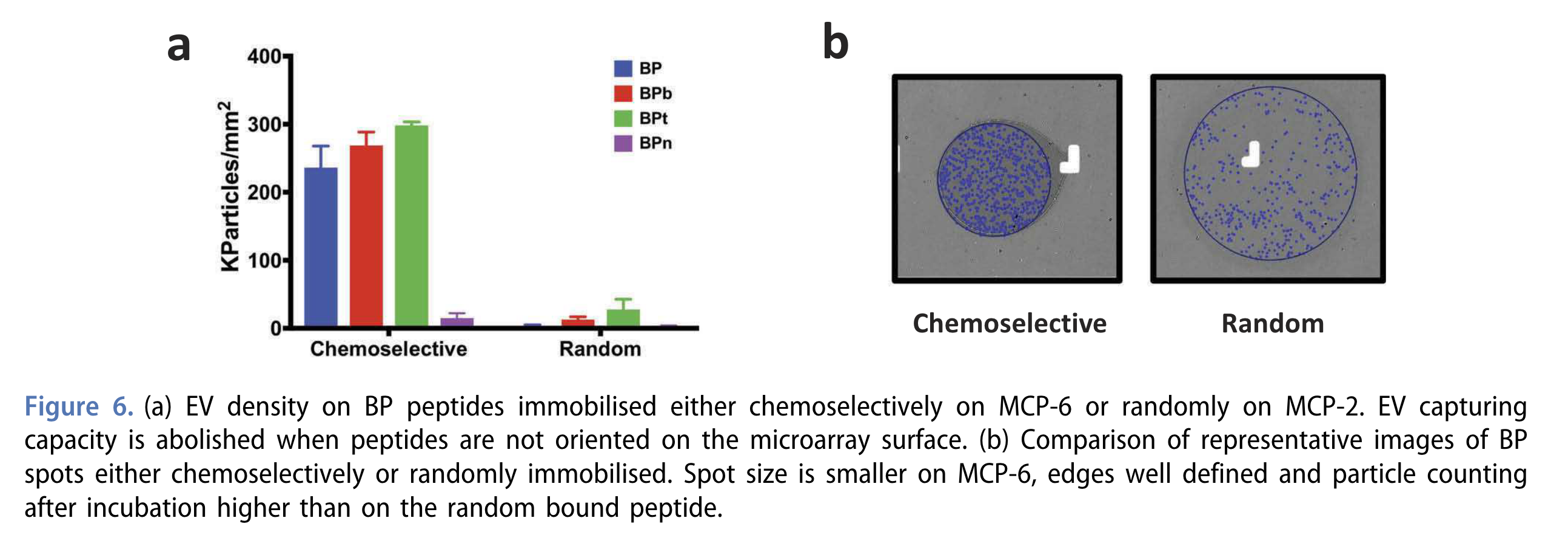Literature/202301141616 membrane-binding peptides to detect small evs
- Source: [@gori2020Membrane-binding peptides for extracellular vesicles on-chip analysis]
- Tags: #peptides #Extracellular-Vesicle
Detecting small extracellular vesicles (sEV) is challenging. However, there are specific peptides that bind to highly-curved membranes. The objective of this paper is to show that it is possible to engineer surfaces coated with the peptides that selectively bind to sEV. Moreover, the process is reversible, which means that particles can be released later.
In this paper, they used the SP-IRIS method to measure the size and phenotype of the detected particles (see also: literature/202301141333 Comparing SiMoA and SP-IRIS).

Overall, the paper shows that their protocol is selective, and the chemical bonding the the surface is crucial (the "random" attachment yields very low affinity, as expected from the chemistry of the peptides and the interaction with the membrane).
